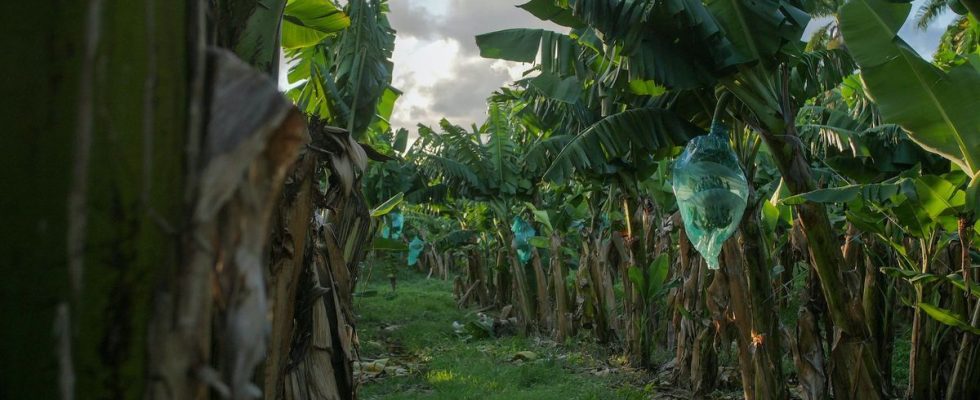Published on
Updated
Reading 2 mins.
According to archives found by the Radio France investigation unit, the risks of cancer caused by chlordecone were already mentioned in the 1980s. A discovery which contradicts the argument of ignorance of the consequences at that time, brandished by the justice.
It is a health and environmental scandal that is not ready to end. While two Parisian investigating judges dismissed the investigation into the poisoning of the West Indies with chlordecone, authorized in banana plantations until 1993, in January, new elements could now change the situation. The investigation cell of French Radio reveals in a long articledocuments indicating that the cancer risk of chlordecone was known to experts as early as 1981.
A record rate of cancers impossible to predict?
Chlordecone-based insecticides, which were used in West Indian banana plantations between 1972 and 1993, contaminated the island’s water and soil for decades. Its effects were devastating on the people of Guadeloupe and Martinique. Moreover, it is in these two islands that the highest rate of cancer in the world is recorded, especially among workers in the banana plantations. More than 90% of the population still has traces of this pesticide in their blood.
However, the investigation into the poisoning of the West Indies with chlordecone ended last January with a dismissal. In their order, the two judges indicated in particular that in the 1980s, economic interests prevailed over health and environmental issues. As a result, helped by several scientific experts, they had concluded that knowledge of the effects of these pesticides on health was not as well known as it is today, and could not predict the harmful consequences to come. The new elements updated by the journalists of Radio France contradict this version.
17 years of archives mysteriously disappeared
What reveals French Radio today is that justice has rendered its verdict, without being able to consult 17 years of essential archives, to establish the toxicity of chlordecone. A fact that is not new. At the beginning of the judicial inquiry in 2008, it is stated: “There is no longer any trace of the remarks that were made in the toxics committee between 1972 and 1989”.
In 2019, some of these documents are finally found, but eight years of archives remain untraceable. Among them, the study of the toxic commission on Curlone (name of a marketed product containing chlordecone), dating from 1981.
Lobbyists sat on the toxics committee
On their hunger, the journalists thus found a former member of this commission, Isabelle Plaisant. And what she says also suggests that the danger was not so unknown as that: “The chairman of the commission, Professor René Truhaut, came to see us to alert us to the fact that the WHO had just classified chlordecone as a possible carcinogen for humans”. in his words.
Other disturbing facts, in the West Indies, samples of vegetables contaminated with chlordecone analyzed by the repression of fraud were also destroyed in 2005. A drinking water analysis report to the Departmental Directorate of Health and Social Affairs (DDASS) from Martinique has also disappeared.
Finally, the last anomaly brought to light by this formidable investigation: the official journal only shows among the members of the toxics commission, independent researchers and state agents. However, in some reports consulted by the investigators, several members of the Union of the pesticide products industry were present. “Did they guide the debates despite the scientific knowledge that was already very advanced at the time?write the journalists. The question does indeed arise.
